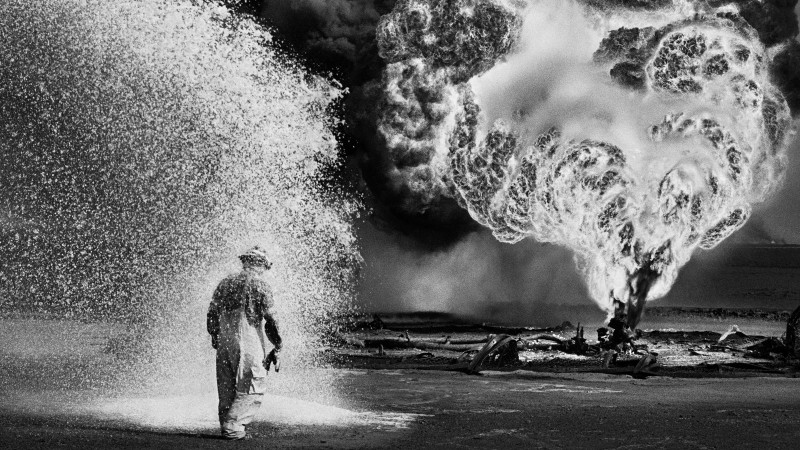The Salt of the Earth, a documentary about famed photographer Sebastiao Salgado, ends with tranquil images of his family farm in Brazil, a leafy earthly paradise restored from the ravages of severe drought. That’s where Salgado went to recover from his experiences in war-torn Rwanda, and, perhaps, a life spent bringing back pictures of the self-inflicted horrors of mankind: genocide, drought, famine and the unspeakable suffering they bring to those caught in their wake.
Now 71 years old, the Franco-Brazilian photographer has roamed jungles, deserts, ravaged cities and fiery battle zones, where he used a knack for rapport with his subjects to create in-depth visual essays on how they try to survive under impossible conditions. Until he could bear it no longer, Salgado documented the cumulative miseries of global displacement following civil and foreign wars that devastated nations in Europe, Africa, and the Middle East.
Emaciated refugees lining up for food or trudging past piles of bodies abandoned or shoveled en masse into makeshift pits. Traumatized Bosnian women, children and old men packed into trucks, minus their murdered menfolk. It’s the stuff of the nightly news, but Salgado’s black-and-silvery photographs are also impeccably composed art objects, his signature lowering clouds adding to their melodramatic beauty. In one of his best-known images, thousands of Brazilians from all walks of life scurry half-naked up and down a vast quarry, shoving one another aside as they prospect for gold.
Yet for some, among them the influential late cultural critic Susan Sontag, Salgado’s poetically realized scenes of destruction aestheticize human suffering, and so diminish it. I’m not sure I agree, but that critique deserves at least a mention in the The Salt of the Earth, which German filmmaker Wim Wenders directed with Salgado’s son, Juliano Ribeiro Salgado. It’s not hard to see why Wenders, who made Paris, Texas and the swoony Wings of Desire and is no mean photographer himself, is so taken with Salgado. Wenders, too, is an arty romantic who shoots Salgado’s heroically stately talking head against a black background or super-imposed onto his own images. It looks lovely, yet Wenders’ worshipful account of Salgado the man feels like a tale half told.
The only boy in a brood of eight, Salgado met his wife, Lelia, when both were student activists in the 1960s. When Brazil fell into dictatorship, the couple left for France, where Salgado soon abandoned his plan to become an economist, and with his wife’s support, set up in business as a photographer. Much is made of their idyllic marriage. We’re left wondering what life was like for his son, who’s not much more than a diplomatic presence in the movie, and for Lelia, a shadowy figure for much of the film who was left to care for their two boys (their younger son has Down syndrome) every time her husband vanished for months at a time into an unknown world. Only at the end does Lelia come into her own when she’s credited with an idea to reforest the parched land of the family farm to which Salgado retreated, depleted and “sick in my soul” from bearing witness to Rwanda’s collapse.


